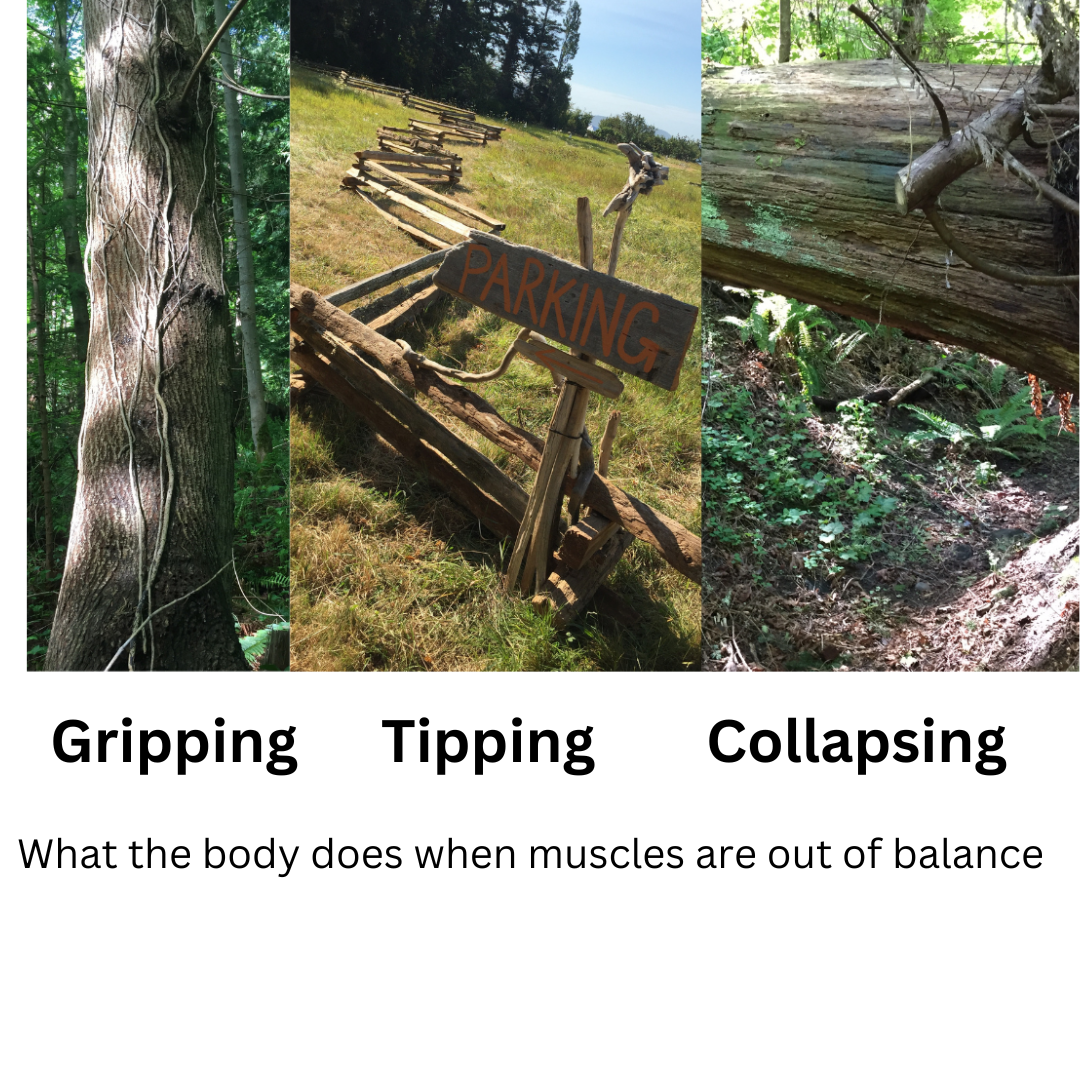|
When we are babies we have a gripping reflex that is there for a purpose---to help us eat, discover and grow. This grip is designed to become less prominent as we develop into older children and adults. We learn how to do different things with our hands. However, this grip can emerge unbidden when we are stressed or frightened—in a ‘fight or flight’ state. Also, this ‘gripping state’ can spread to other muscle systems in the body. It’s interesting that when we see someone losing control emotionally we say, “Get a grip” also when we feel frightened of not having control and falling into the chaos of life we say, “I’m losing my grip”. What happens in our body when we are in a gripping state? Flexor muscles over work. These muscles are those that curl our body into a fetal position that pull our hands into a gripping position. When the flexor muscles are overworking they argue with our extensor muscles—those that allow expansive movement and balance the flexion of the ‘survival’ position. When we are over flexed the world becomes a dangerous place simply because we are in a posture that signals danger. The muscle imbalance that follows creates tipping: A posture that tilts left or right, front or back. Pain follows then muscle weakness and collapse. Of course if there is real danger we need to respond to it but many of our body’s ills are from ‘stuck in place’ gripping habits from earlier traumas. For example, dystonia is a muscle disorder rooted in imbalance between extensors and flexors that occurs over time, fueled by the ‘gas pedal’ of the ‘fight or flight’ sympathetic nervous system. The inhibition system in our brains (the brake) grows weak from lack of use. I learned this valuable information from Dr Farias who created the Dystonia recovery program. His teaching confirmed what I was learning from my own body: muscular balancing was of utmost importance in maintaining pain free, smooth movement and a feeling of safety connected to a balanced posture and calm nervous system. But how do we achieve this balance? I believe it starts with learning how to calm our brains enough to observe where our bodies are out of balance— gripping, tipping and collapsing. Often it is useful, and sometimes essential, to have an outside eye to discern where the tight and weak muscles are and where the compensations are (see blog on Compensations or awareness). Changing internal attitudes of self-criticism and self-doubt calms our nervous system. Balance is nourished with physical practices like breathing and exercising. Pausing encourages recovery from energy output and excitement. How can we achieve both effort and effortlessness? What if it could be easy?
0 Comments
Leave a Reply. |
AuthorKristi Magraw is known for having developed a unique synthesis of Eastern healing (Five Element theory) and Western ways of working with the mind, called the Magraw Method, which she established in 1979. This method uses metaphoric language and release techniques to help people heal physical and emotional pain. Archives
September 2023
Categories |

 RSS Feed
RSS Feed
